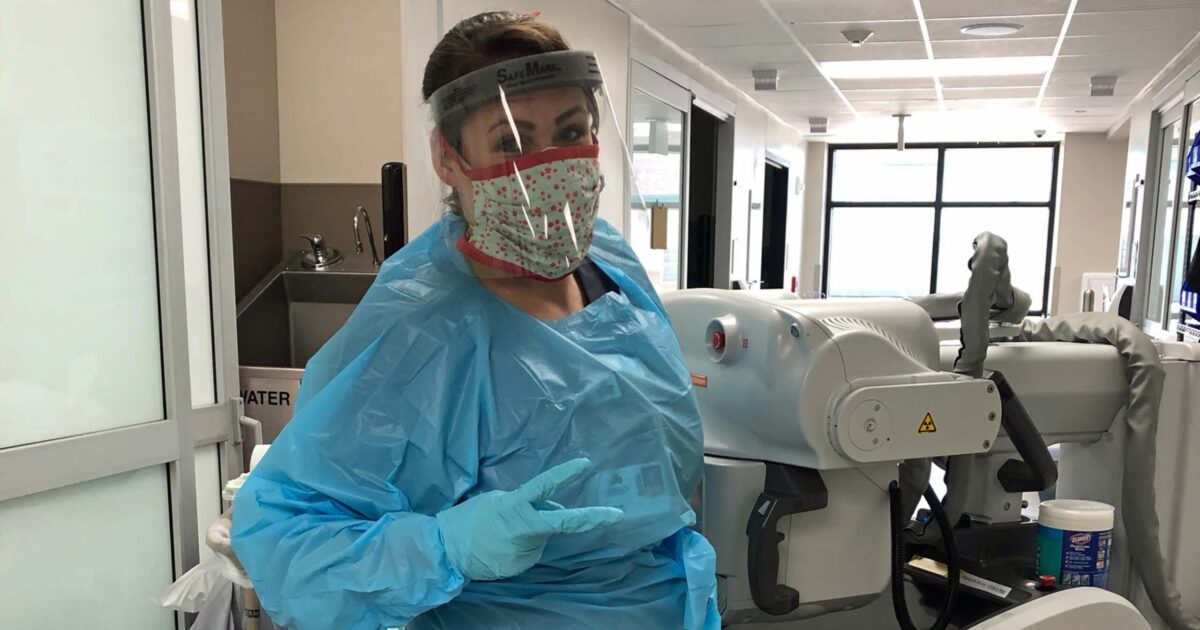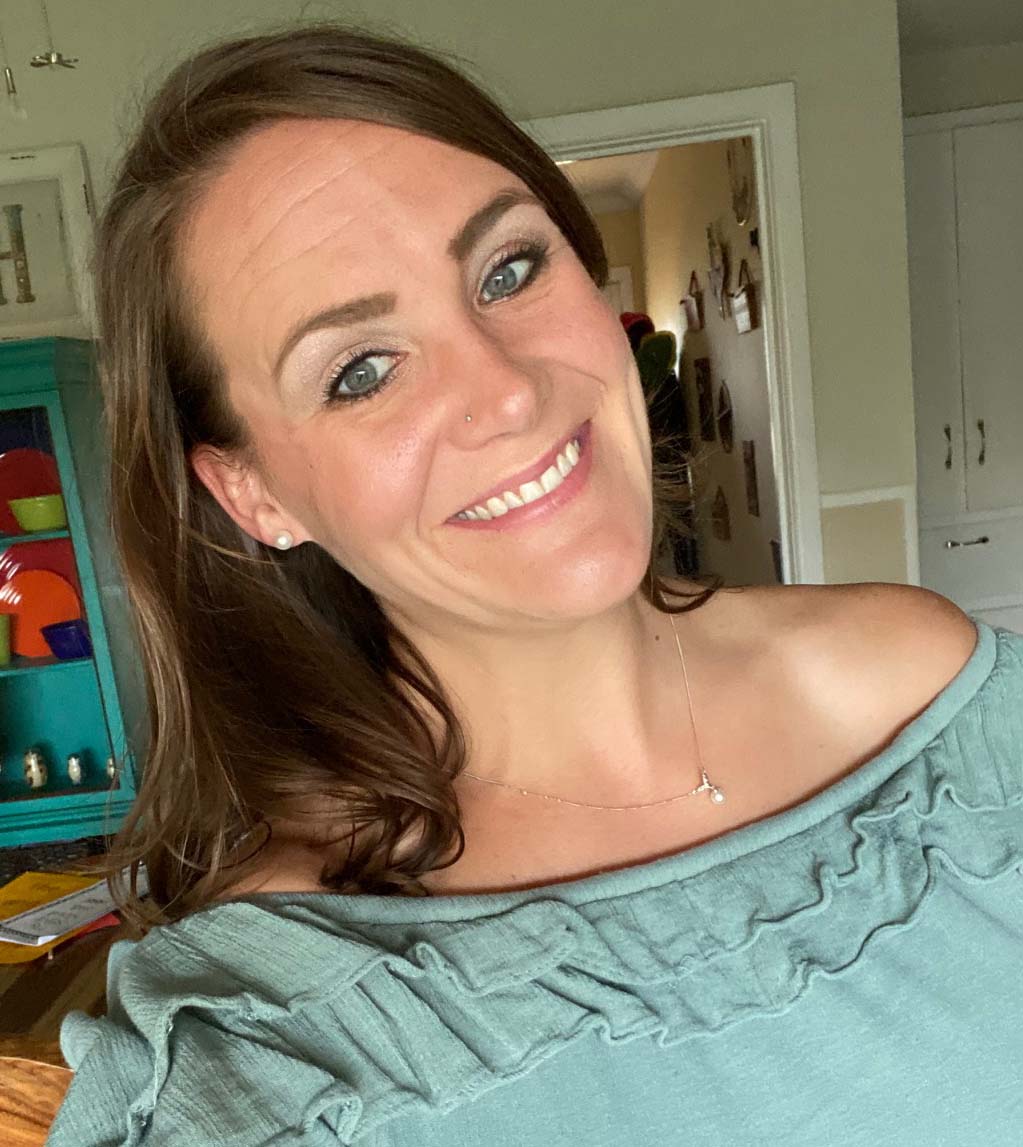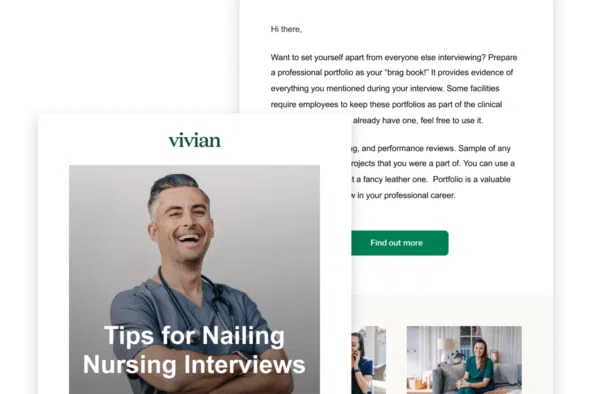In Vivian Health’s ongoing Rx for Success series, we profile a healthcare provider from our platform each week, highlighting critical career moments fueling their renewed passion for healthcare.
It was Christmas Day 2020, and radiology technologist Sara Beedy found herself in the middle of the most difficult shift of her career. The Texas hospital where she worked was experiencing an intense wave of patients with COVID-19.
“Every single one of those patients has to have a chest X-ray because it’s a respiratory disease,” Beedy told us. “So just like the doctors and nurses, we were in there all day, every day with them. We were so short-staffed, and those days were hard.”
Patient visitation was also extremely restricted, and Beedy saw herself taking on an added role beyond the imaging studies typical of a radiology tech.
“I did my best to help patients feel less alone,” she recalled. “I held hands, I chatted and told them I’d pray for them, and in some cases, I held their hand in the ICU while they left this earth. The pandemic was truly a life-changing experience that molded me into a stronger tech.”
In the days leading up to Christmas, Beedy met the family of an ICU patient who wasn’t likely to survive his COVID-19 infection. She shared her phone number with them so they could communicate with their loved one. Come December 25, the patient’s final moments had arrived. Beedy put the family on a FaceTime chat on her phone.
“Because of that, they were able to say goodbye to their brother, their father, their son, and they were so grateful for that,” recalled Beedy. “We had so many people go that day. It was a rough shift.”
Helping Patients Go from Broken to Fixed
Beedy is quick to point out that in normal times, radiology tech jobs are often far more positive and uplifting, albeit challenging work. More often than not, Beedy sees patients experience significant improvements from when she first meets them.
“I’ve literally watched people hardly able to walk come in for X-rays before their surgery, then to see them come back for their follow-ups is amazing,” she explained. “It’s great to see that you are part of fixing these people so that they can enjoy the rest of their lives. It’s pretty awesome, and that happens all the time.”
Radiology techs can work in a variety of settings, such as outpatient medical imaging centers. Beedy always chooses to take positions at hospital trauma centers where patients may come in with serious acute injuries, and some may be unconscious or intubated.
“I like to be busy and I love the ER. It’s my favorite.”
Radiology Technologists Do Much More Than Push a Button

Although being a rad tech in an ER may be challenging, Beedy finds it quite rewarding and the work more varied than some might assume.
“Patients may not be unconscious but may be completely in shock,” clarified Beedy. You have to be able to calm them down and talk them through it. We have to think outside of the box to get the correct imaging. Anything from an ATV accident to car accidents, to gunshot wounds or stabbings, I mean, we’re there for every bit of it.”
She continued, “I think the common misconception is that we just push a button every time somebody comes in with a broken arm. And it’s really not that simple. We’re literally in every step of the way through the hospital.”
Beedy and her cohort of radiology techs do quite a bit besides pushing the X-ray machine button. As an example, she described fluoroscopy exams, where rad techs make a video that stitches together multiple X-ray frames to track how a swallowed or injected medical substance moves through the body.
Because of the variability and technical nature of the work, radiologist technicians typically need licensure from their state after completing an associate degree in the field. Degree holders can go into various pathways, including computed tomography (CT), magnetic resonance imaging (MRI), radiation therapy, sonography or ultrasound technology, nuclear medicine and interventional radiology.
There are also numerous opportunities for advancement in the field, some of which Beedy has pursued.
“I actually went on and got my bachelor’s degree, which would make me eligible to be in administration or allow me to get my master’s degree, and then I would be able to teach radiology in the future.”
Beedy explained that another advancement pathway is to become a radiologist assistant. Somewhat akin to advanced practice providers like a nurse practitioner or a physician assistant, but in radiology, a radiologist assistant can perform a wider array of studies than a radiologist tech and can assist in diagnosing patients under the supervision of a medical doctor in radiology.
Pathways for advancement can also lead to higher salaries. Beedy lamented that the typical radiology technologist’s salary is often less than people expect or feel technologists deserve for the amount of training involved and complicated work performed. Another way to boost earnings is to take on travel assignments, which tend to pay more than staff positions.
“We’re making $3 more than someone at Target if you’re at a staff position,” said Beedy, “which ultimately was one of my deciding factors to join Vivian and get started traveling.”
Finding Travel Contracts with Vivian’s One-Stop Shop

To help her find higher-paying travel contracts, Beedy turns to Vivian to see all her options on one platform.
“When I get ready to start looking for the next contract, my first stop is I get on Vivian and I pull it up,” she said. “It’s a super useful tool. I use it all the time when I’m looking for contracts. There are so many different agencies out there, and some have access to hospitals that others don’t. It’s nice to be able to see them all in one spot.”
Recently, Beedy’s contracts have been at various locations in the southeast, such as Birmingham, Alabama and Knoxville, Tennessee. Most recently, Beedy took a contract in Georgia, allowing her to be near her fiancé’s military post in the Peach State. Next, she’s ready to try some new regions.
“For my next contract, I’m looking at Massachusetts as one option, or to go to the area of Northern California, Oregon or Washington. I’ve never been up there, and I would like to fly my kiddo out there. He’s never been, and we could go explore when I’m not working. I usually choose places I’ve never been to be somewhere new and experience new things.”
If you’re looking for somewhere new to experience your own adventures while working as a rad tech or in another medical field, start your search with Vivian.









